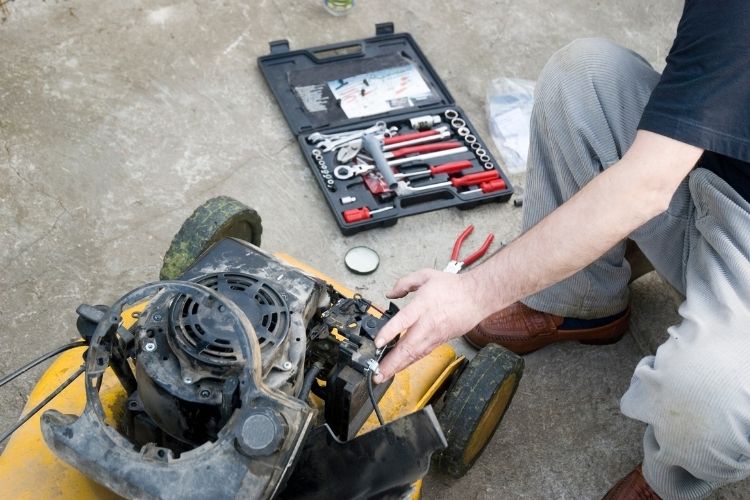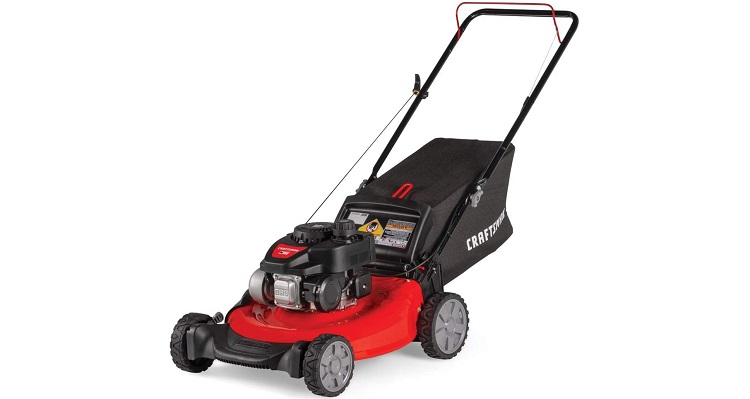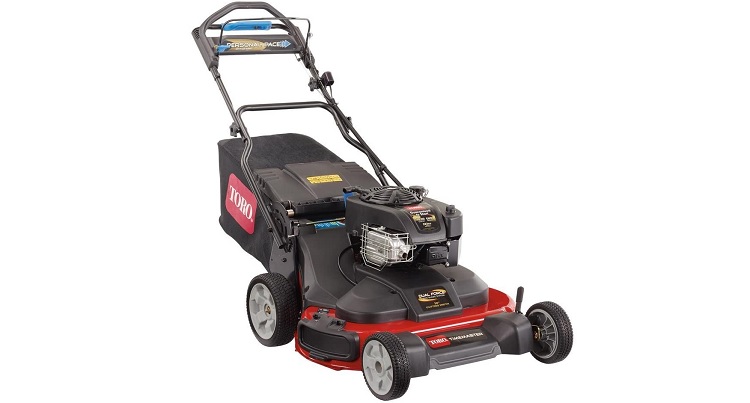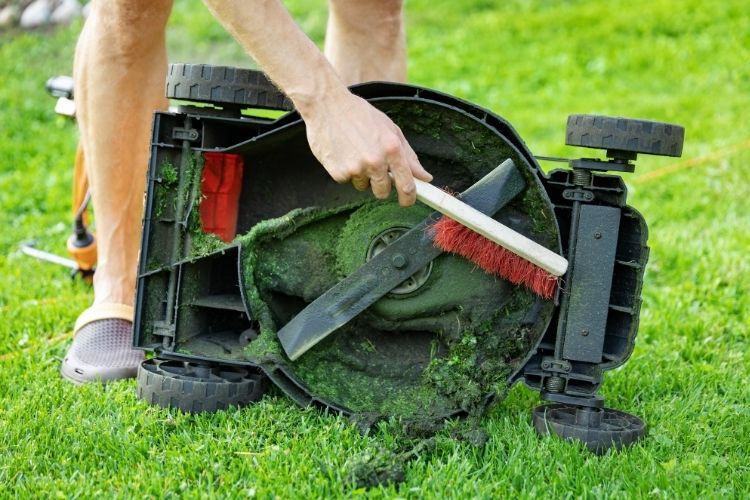- Best Grass Seed for Clay Soil - April 3, 2022
- Seashore Paspalum Guide – Warm-Season Grass - January 30, 2022
- Best Grass Seed for South Carolina - January 20, 2022
It’s been raining and the grass on your lawn has grown so tall. And on the day you’re supposed to mow your grass, it rains. Can you cut wet grass? Have you got the right equipment? How do you go about mowing wet grass? If you’ve asked yourself these questions, you may have heard that cutting wet grass is an absolute no-no. But is it always such a bad idea? Suppose you have to mow the grass while it’s wet? Will that damage your lawn?
Perhaps you have a tight schedule, and you think now’s the right time to do it. If so, read our comprehensive guide on mowing wet grass below to get answers to your questions.
Can You Cut Wet Grass?
It’s never advisable to mow a wet lawn. But there are certain situations where you must mow the grass. For instance, if it’s been continuously raining and your lawn has grown out of control or if you have to manicure your yard for a forthcoming event.
Either way, cutting wet grass causes more harm than good. That said, here are a few reasons why you shouldn’t mow wet grass.
Risk of Slip and Fall
It’s easy to overlook the hidden hazards of a wet lawn but pushing or riding your lawnmower comes with a serious slip and fall risk. The risk is even higher if your grass is soggy. It’s particularly recommended that you avoid riding a mower on a sloppy, wet lawn because of the increased danger of tipping over.
Possible Permanent Damage
Thanks to the heavy moisture, wet grass blades tend to bend over. As you cut grass, you’re likely to miss the bent blades, leading to a patchy and irregular mowing job.
Cutting wet grass may also damage the roots of grass, permanently damaging your once-lovely lawn. Potential growth of mold and fungus is another way mowing wet grass can destroy your lawn.
Damaging Your Lawnmower

Wet, clumpy, and sticky grass will block your mower’s blades and decks. A blocked mower must work harder to mow grass and this may put excessive pressure on the engine, hence shortening your lawnmower’s lifespan.
Also, you risk destroying your mower’s engine once the moisture comes into contact with excess fuel. In addition to that, you might need to clean up the deck while you work, which only increases the time you spend mowing the lawn.
Extra Work
Mowing a wet lawn not only puts your safety on the line, but it may also be an inconvenience since you’d have additional cleaning work to carry out after mowing. Moreover, the chlorophyll on mowed wet grass can leave stubborn stains on your lawnmower.
The clumped-up, wet, and potentially muddy grass is messy and will require a great deal of effort to get rid of. If you wouldn’t want to spend your precious time doing this, then you may want to hold off mowing until your lawn is reasonably dry.
When Is It Too Damp to Cut Grass?
At certain times you can successfully mow wet grass. But the degree of dampness or wetness will decide whether you’ll be able to cut grass successfully or not. So, when is it too damp to mow a lawn?
- Don’t mow if the ground’s wet. Hold off until the ground is dry and firm.
- It’s not advisable to cut grass in the rain particularly if you’re doing so with an electric lawnmower.
- Light morning dew might not pose a serious problem. Clear it off using a dew brush and go on to mow.
If the job isn’t urgent, wait until the lawn is dry enough to avoid too many problems.
Tips for Cutting Grass When It’s Wet

If you really have to mow your lawn while it’s still wet, there are some important factors to consider and guidelines to follow to not only avoid destroying your lawn but also ensure your own safety.
Let’s go over them below:
Sharpen Your Lawnmower Blades
Blunt mower blades can make cutting wet grass a difficult task since wet grass hangs low rather than standing upright. The blades will miss the grass, making it hard to get a smooth cut.
One way to solve this is to sharpen the blades thoroughly so they don’t brush over and nudge glass blades sideways or aside.
Cut Grass with a Gas-powered Lawnmower
A gas-powered lawnmower is unlikely to pose a higher risk of electrocution when you cut wet grass. That’s why we’d recommend using it rather than an electric lawnmower. Some good gas-powered mowers out there include Honda HRX217HZA, Craftsman M105, and Weibang WB537SCV-3IN1.
Some lawn care experts recommend applying some kind of oil or spraying silicone under the mower to stop wet grass from getting stuck on the deck, hence leaving a sticky mess.
Lawnmowers with serrated blades can cut wet grass much better. But most of them are commercial-grade mowers and may be out of reach for the average property owner who has a small yard to maintain.
Use Lawnmowers with Wide Wheels

When excessive pressure is put on a wet lawn, this can easily tear up and damage the soft ground. Since you can easily damage your yard when cutting grass after heavy rains, it’s important to pick the right lawnmower for this task.
It’s highly recommended that you get a mower with broad wheels for this task to decrease the chances of rut damage due to the sinking soft ground. Some great wide-wheeled lawnmower options include Toro TimeMaster 30-in Push Lawnmower, Greenworks Pro 25-in Cordless Push Lawnmower, and DeWalt DW33 33-in Push Lawnmower.
But be sure to first check out the soil to see if it’s muddied. If so, you should hold off mowing until the lawn is dry enough.
Lift the Mowing Deck
Raising the mowing deck of your lawnmower will decrease the load strain on your mower. If you select a very low mowing height, you’ll put too much pressure on the mower’s engine and potentially cause a mechanical failure. Moreover, raising the cutting deck means easier and smoother passes than when cutting with a lower height.
You can make up for the raised cutting height by cutting grass more often than you usually do—maybe two more times a week.
Mow in Smaller Patches
If you opt to cut your grass after it rains, mow in small patches than you’d usually do. Narrower passes help reduce the grass cut in one pass and decrease the load on your mower, making your job easier while preventing cases of the engine overheating.
It’s also better to cut grass with a zero-turn mower, otherwise make sure to avoid sharp turns that can put you at risk of injury.
Discharge Grass Clippings
Since everyone prefers mulching or clipping, this option won’t work effectively when mowing a wet lawn. Bagging may easily destroy the bag since wet grass clippings are really heavy. Also, the wet grass cuttings will leave the bag very dirty and even discolored.
To cut wet grass successfully after it rains, discharge the cuttings onto the lawn using your lawn’s side chutes.
Clear the Grass Clippings Out of the Lawn
Leaving tufts of grass cuttings on your lawn will invite disease. After cutting grass in the rain, be sure to scrape the wet clippings off using a rake. While this is additional work you may not have anticipated, it’ll really help you maintain your lawn.
Clean the Lawnmower When Through

When through with mowing, clean the mower to get rid of any grass cuttings that may have remained under the mowing deck and on the blades. If you don’t keep your lawnmower clean, moss will grow on the blades as well as other parts of the mower. Then when you go out cutting the grass next time, you’ll be spreading moss and fungi.
Leaving your lawnmower dirty with moisture and wet grass clippings will expose it to rust and possible damage. Also, you may want to empty the fuel in case it’s mixed with moisture. If the fuel is contaminated, it means that your mower won’t work the next time you need to use it.
FAQs
Answer: It’s not advisable to mow a wet lawn. You should wait for it to dry before mowing. Wet grass cuttings may clog your lawnmower, choking it and making it spit out wet grass clumps that can smother and damage your lawn if not cleared.
Answer: If you’re dealing with a light rain shower or morning dew, you might need to wait for just 2-5 days for the grass to dry before cutting it.
Answer: Here are tips on how to mow a wet lawn without clogging your lawnmower:
• Clean your lawnmower after cutting the grass.
• Mow your lawn more regularly.
• Lift the lawnmower deck while mowing.
• When everything else doesn’t work, side-discharge instead of mulching or bagging.
• Stabilize the fuel in your lawnmower to prevent contamination.
• Sharpen your lawnmower’s blades.
Summing Up Tips for Mowing Wet Grass
Cutting wet grass is always a big no-no but it sometimes may be necessary. Having said that, you should always avoid cutting grass when your lawn is extremely soggy or when it’s raining outside.
Take extra care when mowing a soggy lawn as the lawnmower might glide out of control, causing devastating damage. In addition, no matter how desperate you’re to cut your grass, you really should put it off if you only have an electric lawnmower to avoid electric shock.
If you stay in a showery climate, trying cutting grass more regularly when the weather allows. This way, you’ll avoid having an overgrown yard that’s too wet to mow. Follow this advice on mowing wet grass and you and your mower will be in great shape the next time you mow your lawn.

